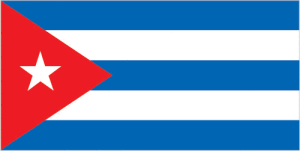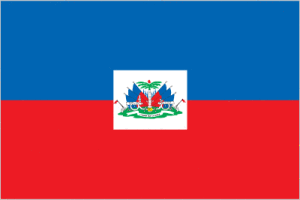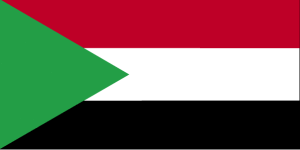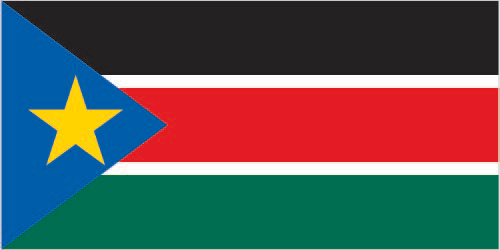Czechoslovakia officially became two countries, the Czech Republic and Slovakia, in 1992.

Flag of Cuba
Cuba celebrates Liberation Day. On January 1, 1899, Spain lost control of Cuba. For a time it was under United States rule. It became a country with a republican government until Fidel Castro overthrew the rulers on January 1, 1959. According to the CIA World Factbook, Cuba is slightly smaller than the state of Pennsylvania. Located in the tropical Caribbean region, Cuba can experience both hurricanes and drought. About 11 million people live on the island, and the country exports sugar, nickel, tobacco, fish, and coffee. Havana is the capital. Childre could learn more at: Cuba.

Flag of Haiti
Haiti celebrates Independence Day. It was a Spanish colony from 1492 until 1697. Then it became a French colony until 1804 when it gained its freedom. According to the CIA World Factbook, Haiti is slightly smaller than the state of Maryland. Like Cuba, Haiti is located in the Caribbean. It can experience hurricanes, earthquakes, and drought. Over 9 million people live in Haiti, and Port-au-Prince is the capital. The country, again according to the CIA World Factbook, is the poorest country in the western hemisphere. Idea: Haiti is part of an island. Children could locate Haiti on a map and discuss its neighbor. Children could learn more at: Haiti.

Flag of Sudan
Sudan celebrates Independence Day. It has been a free nation since 1956 when Egypt and the United Kingdom gave up control. Sudan is about a fifth of the size of the United States. Located south of Egypt, the country lies in a desert region. Over 26 million people live in the country, and most of these people live along the Nile River. Khartoum is the capital. On July 9, 2011, South Sudan broke away and formed its country. Children could learn more at: Sudan.
 South Sudan celebrates Independence Day. This land-locked country voted to secede from Sudan in 2011. South Sudan’s area is a bit smaller than the area of Texas. The White Nile flows through the center of the country, and the climate is hot with seasonal rains. Most of the twelve million people survive on subsistence farming, and Juba is the capital. Older children can learn more at:
South Sudan celebrates Independence Day. This land-locked country voted to secede from Sudan in 2011. South Sudan’s area is a bit smaller than the area of Texas. The White Nile flows through the center of the country, and the climate is hot with seasonal rains. Most of the twelve million people survive on subsistence farming, and Juba is the capital. Older children can learn more at: